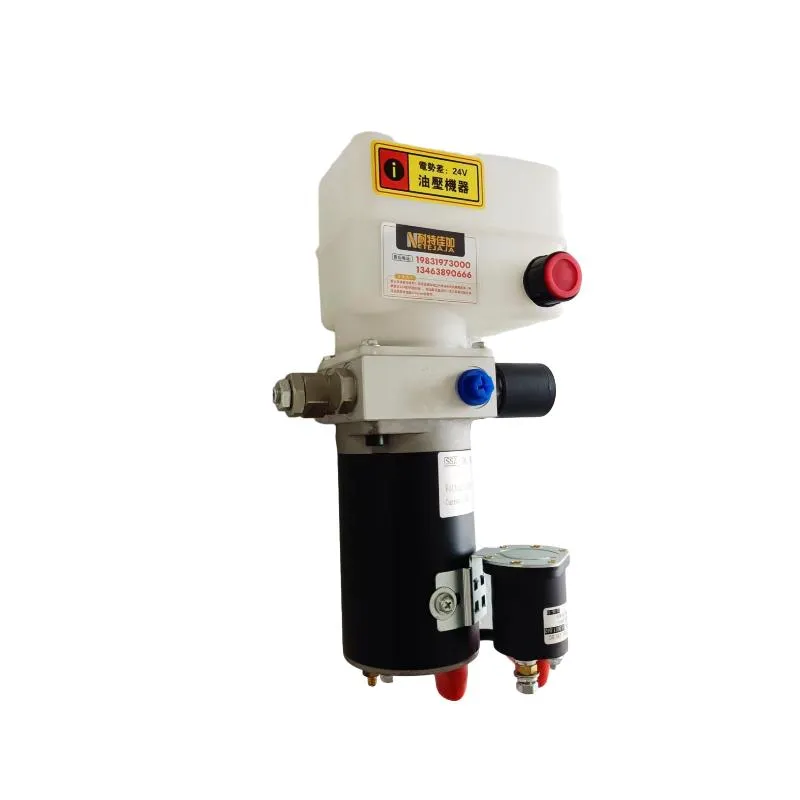Oct . 06, 2024 04:51 Back to list
4 inch hydraulic cylinder products
Understanding 4-Inch Hydraulic Cylinder Products
Hydraulic cylinders are vital components in various industries, serving as mechanisms that convert hydraulic energy into mechanical force. Among the various sizes available in the market, the 4-inch hydraulic cylinder stands out due to its versatility and robust performance. This article delves into the specifications, applications, and advantages of 4-inch hydraulic cylinder products.
Specifications of 4-Inch Hydraulic Cylinders
A 4-inch hydraulic cylinder typically refers to the bore diameter, which is 4 inches. The bore size directly impacts the hydraulic force the cylinder can generate; a larger bore allows for greater force output. Hydraulic cylinders are characterized by their stroke length, which is the distance the piston travels within the cylinder. Stroke lengths can vary widely, allowing for customization based on specific application needs.
These cylinders are usually constructed from high-strength steel to withstand the high-pressure environments typical in hydraulic systems. Coupled with seals and gaskets made from durable materials, they ensure effective sealing and reduce the likelihood of hydraulic fluid leaks. Additionally, 4-inch hydraulic cylinders can be single-acting or double-acting. Single-acting cylinders use hydraulic pressure to move in one direction, while double-acting cylinders can be powered in both directions, providing more versatility in automated systems.
Applications of 4-Inch Hydraulic Cylinders
The applications of 4-inch hydraulic cylinders are diverse, encompassing various sectors such as construction, manufacturing, and transportation. In construction, these cylinders often power heavy machinery, including excavators, bulldozers, and cranes, enabling them to lift and move substantial loads. The automotive industry also utilizes 4-inch hydraulic cylinders in assembly lines and as part of hydraulic lifting systems for vehicle repairs and maintenance.
4 inch hydraulic cylinder products

In manufacturing, these hydraulic cylinders are essential in automation processes. They power conveyor belts, presses, and robotic arms, aiding in tasks such as material handling and assembly. Furthermore, the agricultural sector employs these cylinders in tractors and other farming equipment, where they are crucial for tasks like plowing and lifting heavy attachments.
Advantages of 4-Inch Hydraulic Cylinders
One of the primary advantages of 4-inch hydraulic cylinders is their power-to-size ratio. Despite their relatively compact size, these cylinders can produce significant force, making them ideal for applications where space is limited. Additionally, they are highly efficient, utilizing hydraulic fluid effectively to minimize energy consumption while maximizing output.
Moreover, 4-inch hydraulic cylinders are known for their reliability and durability. Built to withstand harsh conditions, they can operate in extreme temperatures and environments laden with dirt or debris. This resilience reduces maintenance costs and downtime, enhancing productivity across various applications.
Another notable benefit is the ease of installation and compatibility with standard hydraulic systems. Many manufacturers produce these cylinders with standardized mounting options, making it simpler for technicians to integrate them into existing hydraulic setups without major modifications.
Conclusion
In summary, 4-inch hydraulic cylinder products play a crucial role across multiple industries due to their robust design, efficiency, and versatility. With a wide range of applications, from powering heavy machinery to facilitating automated processes, these hydraulic cylinders deliver reliable performance in challenging environments. As technology advances, the ongoing development of hydraulic systems is expected to further enhance the capabilities and efficiency of 4-inch hydraulic cylinders, solidifying their position as a cornerstone in industrial operations. Whether you’re in construction, manufacturing, or agriculture, investing in a high-quality 4-inch hydraulic cylinder can significantly improve your operational efficiency and productivity.
-
Fork Lift Power Units - Hebei Shenghan | Efficiency, Reliability
NewsJul.13,2025
-
1.5-Ton Turbocharged Cylinder-Hebei Shenghan|Hydraulic Solution,Energy Efficiency
NewsJul.13,2025
-
Auto Hoist Power Units-Hebei Shenghan|Efficiency&Industrial Lifting
NewsJul.13,2025
-
Double Acting Power Units-Hebei Shenghan|Hydraulic Solutions,Industrial Efficiency
NewsJul.13,2025
-
1.5 Ton Lifting Cylinder 70/82-40-290-535 - High-Performance Hydraulic Solution | Hebei Shenghan
NewsJul.13,2025
-
Fork Lift Power Units - Hebei Shenghan | Efficiency&Reliability
NewsJul.13,2025
